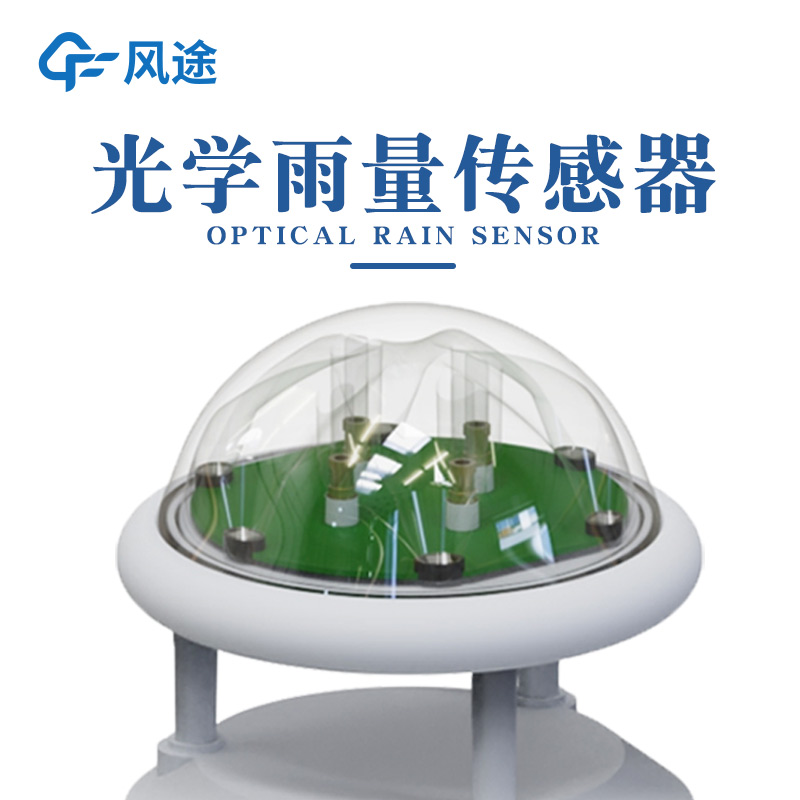Tianqiong Sensor IOT Technology Co., Ltd
Sales Manager:Ms. Emily Wang
Cel,Whatsapp,Wechat:+86 15898932201
Email:info@fengtutec.com
Add:No. 155 Optoelectronic Industry Accelerator, Gaoxin District, Weifang, Shandong, China

Sales Manager:Ms. Emily Wang
Cel,Whatsapp,Wechat:+86 15898932201
Email:info@fengtutec.com
Add:No. 155 Optoelectronic Industry Accelerator, Gaoxin District, Weifang, Shandong, China
time:2025-06-30 09:04:53 source:Weather Station viewed:259 time
The Rainfall Real-time Monitoring System is a tool that comprehensively uses sensing, transmission, and data analysis technologies to conduct real-time and accurate monitoring of rainfall, widely applied in meteorological forecasting, flood control and disaster reduction, water resource management, and other fields. The system consists of a rainfall sensor, a data collection and transmission module, and a data analysis and processing platform: the sensor collects rainfall information, the transmission module quickly delivers the data to the platform, and after in-depth processing, it provides a basis for decision-making.
In the field of rainfall sensors, there are various types to choose from, each with its own advantages.
The first is the Tipping Bucket Rain Gauge, the most classic rainfall sensor. It has a simple structure composed of a rain collector, a tipping bucket, and a counting device. During rainfall, rainwater flows into the tipping bucket, and when a certain amount accumulates, the bucket tips over, and the counting device records the number of tips to achieve rainfall measurement. It features high stability and easy maintenance, making it suitable for conventional scenarios such as meteorological monitoring stations and hydrological monitoring points.
The second is the radar rain gauge, which uses radar technology to calculate rainfall by transmitting electromagnetic waves and receiving reflection signals from raindrops, analyzing the size, speed, and quantity of raindrops. It can achieve large-area non-contact monitoring and quickly obtain wide-area rainfall distribution. In complex terrain areas such as mountainous regions and large river basins, it provides timely macro rainfall information for flood control and disaster reduction.
The third is the Optical Rain Gauge, based on the optical principle. It emits light of a specific wavelength inside, and when raindrops pass through, they cause changes in light blocking and scattering. The raindrop parameters are calculated by detecting the light signal. With high sensitivity and precision, it excels in recording tiny precipitation and rapid rainfall changes, suitable for fine meteorological monitoring in cities and high-requirement scientific research projects.
The fourth is the Piezoelectric Sensor, based on the piezoelectric effect. When raindrops strike the piezoelectric sensing element, they generate an electric charge, and the change in charge is related to the rainfall. It has a fast response speed, can reflect real-time changes in rainfall intensity, and can still work stably in harsh environments such as strong winds and sandstorms.
In summary, different types of rainfall sensors play their respective roles in the rainfall real-time monitoring system with their own advantages. They collect rainfall data from multiple dimensions, and through system integration and analysis, they lay a solid data foundation for meteorological early warning, water conservancy dispatch, and other work, helping to build a more scientific and efficient rainfall monitoring and protection system.

Photovoltaic weather stations are professional monitoring devices specifically designed for the photovoltaic industry, capable of real-time and precise measurement of multiple key parameters. Among them, the measurement of thermoelectric total radiation parameters can obtain comprehensive energy dat...
Soil moisture refers to the degree of dryness and wetness of the soil, and its value has a profound impact on the growth and development of crops. An appropriate soil moisture level can provide sufficient water for crops, ensuring the vigorous growth of plants and ultimately achieving a dual improve...
The Handheld Weather Station is a portable meteorological observation instrument that integrates multiple meteorological element monitoring functions, and the FT-SQ5A is a typical representative of it. It uses precise sensors and intelligent chips, and can accurately measure five meteorological elem...
I. Core Hardware Configuration(I) Meteorological SensorsBasic Elements: Wind speed, wind direction, air temperature, humidity, atmospheric pressure, rainfall, and light intensity sensors should be equipped as basic standards. The accuracy of each sensor should meet national meteorological instrument...